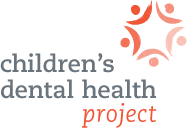FAQ: Pediatric Oral Health Services in the Affordable Care Act
FAQ: Pediatric Oral Health Services in the Affordable Care Act (ACA)
How do children get dental coverage under the ACA?
Pediatric dental coverage is an ACA Essential Health Benefit that must be offered to families buying health insurance in the new state- and federally-facilitated marketplaces (“exchanges”) in the individual and small-group insurance markets. Depending on the state, pediatric dental benefits may be offered in up to three ways:
- Through a qualified health plan (QHP) that includes dental coverage (embedded)
- Through a stand-alone dental plan purchased in conjunction with a QHP
- Through a contracted/bundled plan (one premium for separate medical and dental policies)[i]
Do families have to buy pediatric dental coverage?
Unless a state requires it, separate pediatric dental coverage is not a required purchase inside the new exchanges. However, outside of the exchanges, individuals purchasing individual or small-group coverage must purchase pediatric dental coverage through their health plan or give "reasonable assurance" that they have purchased it through an exchange-certified stand-alone dental plan.
What services will be covered?
The ACA does not specify which tests, treatments, or services must be included in the EHBs. States select a benchmark plan for covered services. If that plan does not include pediatric dental coverage, the benchmark is supplemented with the dental services offered in either the state's Children's Health Insurance Program (CHIP) plan or the largest dental plan offered by the Federal Employee Dental and Vision Insurance Program.
Are families who buy dental coverage in the health insurance marketplaces eligible for tax credits?
Families earning up to 400% of the federal poverty level[ii] are eligible for a tax credit to lower the cost of their monthly premiums. A family purchasing separate medical and dental coverage will have two monthly premiums. IRS policy suggests that a family’s tax credit may not cover the cost of dental benefits if they are only offered separately in a marketplace.
What about dental deductibles and out-of-pocket costs?
In choosing dental coverage, families should know that cost-sharing (how much the plan pays for services) and the treatment of deductibles may differ from plan to plan.
The ACA seeks to limit a family’s out-of-pocket costs. The out-of-pocket limit for QHPs varies by family income and is the same whether or not a plan includes dental coverage. Families purchasing stand-alone dental coverage will have an additional out-of-pocket limit that must be "reasonable."
In states where the federal government is establishing the exchange, the out-of-pocket limit for stand-alone dental plans is $700 for one child and $1,400 for multiple children. State exchanges may set their own standard for reasonable out-of-pocket limits for stand-alone dental plans. Families should consider their children's potential dental needs and how all costs are applied when evaluating plans.
QHPs with embedded pediatric dental may require that the full plan deductible (for medical and dental) be met before pediatric dental services are covered. Consumers should consult the summary of benefits when shopping or contact the plan directly to see whether the deductible applies to pediatric dental services.
Please find our consumer guide, "Buying Children's Dental Coverage Through the Marketplace" here.
[i] This option will not be available in federally-facilitated marketplaces in 2014.
[ii] 400% of the FPL for a family of four is an annual income of $94,200.
